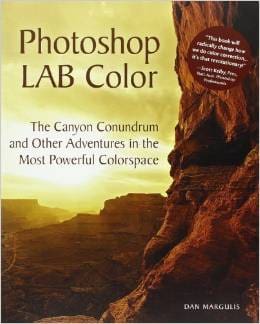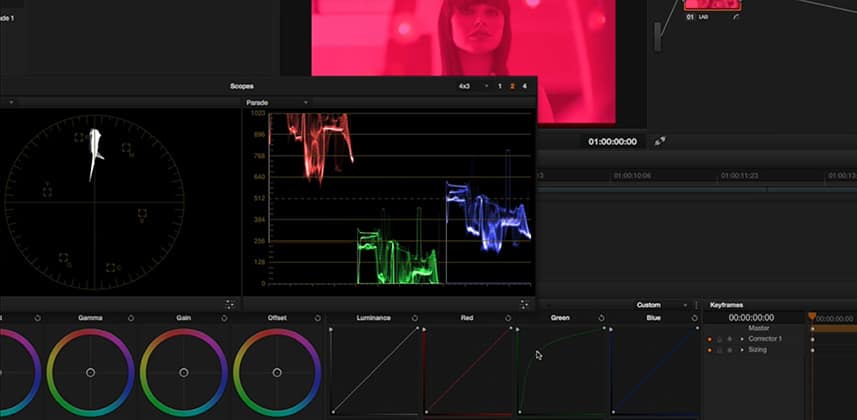| Series |
|---|
LAB Colorspace: A re-Introduction and Overview (with DaVinci Resolve 11)
The upgrade to DaVinci Resolve 11 may seem like it’s focused on its editorial toolset but it also introduced a host of new features for their core colorist users—you and me.
Of all the new features introduced, a single innocuous add-on got me really REALLY excited. It’s this feature right here:

The LAB colorspace was introduced in Resolve 11 without much mention outside the Release Notes. And you don’t hear of very many colorists making use of LAB… or if they are, they’re keeping it close to their chests.
This weekend I was sipping Port with my Tao Colorist Newsletter Managing Editor Jim Wicks.
He mentioned his forays into LAB colorspace, which he was using with great effect. I got very excited to hear this – but our wives were with us and rather than bore them to death, we promised to pick up the subject at a later date.
That conversation renewed my enthusiasm for learning how to work in LAB.
With the release of Resolve 11, I made a medium-term goal of learning this workflow before 2014 wrapped up. Well, we’re nearing the end of 2014—and I’ve just got to say: Thank you Jim for re-igniting my desire to learn about LAB!
So here we are, an initial Insight about color correcting in the LAB colorspace.
Why LAB?
What is it about LAB that gets me jazzed? Four words:
Photoshop Guru Dan Margulis
I credit Dan and his book Professional Photoshop: The Classic Guide to Color Correction for launching me into the world of color grading as a serious study. The insights, workflows and methodologies he shared gave me the background I needed to turn this into a serious professional pursuit with a core understanding of Why we do what we do.
Not all Photoshop techniques translate directly to professional video color correction tools. But the thinking behind the moves that Photoshop experts use on their images can be adapted to our tools. Of course, a Photoshop professional may work on a single still image for an entire day – and video colorists need to work on thousands of images in a day. Clearly, how we apply our energies are going to be different.
Yet – if you want to up your game, study the Photoshop experts. Dan is one of those guys to study.
I still haven’t answered the question: Why LAB?
Quite simply: Because Dan Margulis said so! 🙂
After a 10 year hiatus in updating his color correction book (he stated, after 5 Editions he had nothing left to say on the subject)—he released Photoshop LAB Color : The Canyon Cunundrum and Other Adventures in the Most Powerful Colorspace.

Photoshop LAB Color
After 10 years, why did Dan come back for an encore to write a book specifically teaching how to work in LAB? From his Introduction:
That working in LAB often is spectacularly better than any alternative is no secret among [Photoshop] professionals. It is also no secret that working in LAB can be quite complex. The surprise is how much of it is accessible to beginners.
Throughout the Introduction to this book, Dan talks about how LAB has sped up his workflow while improving his results. He also discusses that LAB is accessible to the beginner while having deep layers of theory and alternative workflows that can be exploited by serious professionals.
The fact that Dan wrote this book is reason enough for me to want to learn about color correcting in the LAB colorspace.
Resolve 11: Introducing LAB Colorspace
Dan’s re-emergence with Photoshop LAB Color made quite the ripple. And when his book first shipped I kept thinking about buying it… except, without a toolset that had a LAB mode to apply his learnings to – it would be a largely theoretical pursuit. And I don’t have time to study theory with no practical application.
THEN Resolve 11 introduced the LAB colorspace… Yeah. I was jazzed! Finally, a practical reason to learn LAB.
Multi-part, Multi-year LAB Color Series
I’ve mapped out the first few Insights in this, an on-going series. I can say, after only a few hours of working through Dan’s book I’m seeing how I can apply his teachings to DaVinci Resolve and my offerings as a professional colorist.
Already I’m seeing powerful uses for it.
Note: I’m not saying it’s better. I’m saying I see different uses. Creating different Looks. And yes, sometimes, better. And sometimes faster.
Definitely an arrow I want to have in my color grading quiver.
This weekend, Jim Wicks mentioned to me how he was able to get colors to really pop in LAB. And now I understand what he’s talking about. But—I’m still a neophyte in LAB.
I’m sharing with you my learnings, as I learn
Rather than coming at this from the angle of an expert sharing my approach. I’m at this sharing how I’m discovering my approach to using LAB. What’s working for me? What isn’t?
If you want to get a head-start, go ahead and buy Dan’s book. I fully endorse it. If you prefer to sit back, let me take the hits and then run with the nuggets I uncover… that’s what MixingLight is all about!
You can expect several follow up Insights over the next two months.
And as I grow using this colorspace, expect periodic followups over the many months and years.
In this Insight, we’ll start with the basics.
We’re going to explore how to set up working in LAB, what tools work and what don’t: Including the difference between working the Primary Sliders versus using Curves for making your LAB adjustments.
UPDATE: After pressing ‘publish’ on this Insight it was quickly pointed out to me by Mixing Light’s official, eagle-eyed Member-at-Large Christophe Delaunay, that Dan Moran did an Introductory Insight on LAB back in ML0193. My Insight takes a different approach, completely breaking down the toolset to understand how Resolve’s different tools effect the individual LAB channels, allowing us to grade in LAB using a single node… and doing so with targeted precision.
Our two Insights should be good companions and if you want a quick preview of using LAB to create Looks, that’s territory I probably won’t be covering for a while and ML0193 is a great place to start. I’ve added Dan Moran’s Insight as part of this Series (I hope you don’t mind Dan)!
If you don’t ask, we can’t answer
As always, here on Mixing Light we value your feedback. Ask questions and we’ll do our best to answer them.
Member Content
Sorry... the rest of this content is for members only. You'll need to login or Join Now to continue (we hope you do!).
Need more information about our memberships? Click to learn more.
Membership optionsMember Login


